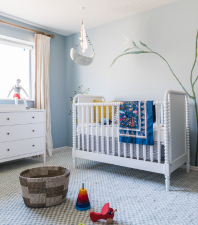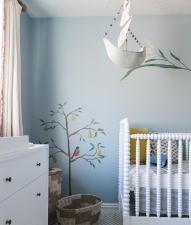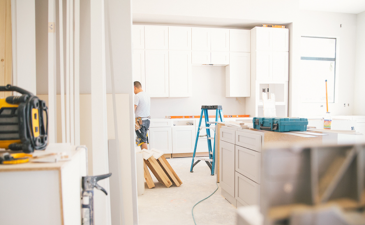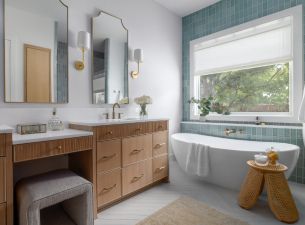Baby Room Renovation: What Should Parents Know?
Home decoration is increasingly focused on sophistication and individuality, and parents are even more willing to invest in children's rooms.
Children's physical functions are not yet fully developed, so their resistance to harm is naturally far less than that of adults. Newborns, or more broadly, infants aged 0-3, spend the majority of their time indoors, exposing them to disproportionately high levels of indoor pollution. Therefore, creating an environmentally friendly, safe, and comfortable room for them is crucial for their health and development.

Choose environmentally friendly paints and avoid radioactive materials
After selecting environmentally certified building materials, it's best to use water-based paints and coatings during the construction process, although this may be more expensive. Avoid overly bright colors, as brighter paints and coatings tend to contain higher levels of heavy metals, which can easily lead to lead and mercury poisoning in children. Choosing water-based materials can fundamentally address the issue of benzene pollution.
Furthermore, many natural stones should be avoided for both flooring and wall coverings. These stones typically emit radioactive gases, which, if exceeded, can be extremely detrimental to a child's physical development. Because exposure to the entire body or parts of the body, including moderate or high doses, can induce leukemia, infants have more fragile immune systems and are more susceptible to radiation damage.
Use subdued color combinations
Color has a significant impact on infants' visual and psychological development. Choose soft, subtle tones for a baby's room, such as light blue, pale pink, or beige. These colors create a warm and peaceful atmosphere, helping babies sleep peacefully. Avoid overly bright or intense colors, as they may irritate the baby's visual nerves.

Keep construction simple and prioritize natural and environmental protection
Decorative materials undergo various processing and construction steps, changing their form. Consequently, the levels of harmful substances released from these materials will inevitably change accordingly. The processing and compounding processes truly influence these levels. For example, if you make a door using one sheet of core board and one sheet of plywood that meet national standards, and then apply three coats of paint, the levels of harmful substances released after processing will undoubtedly be significantly different from before processing. It is this compounding process that truly impacts air quality indicators. Therefore, when decorating a baby's room, choose materials with minimal processing steps. Following the principles of "pollution-free and easy to clean," natural materials should be used as much as possible, and construction techniques should be used with minimal intermediary processing. Generally speaking, minimalist decoration is recommended, minimizing the use of materials and construction work.
Choose household items carefully, and daily cleaning and ventilation are crucial
Prevent formaldehyde contamination from children's products and clothing, such as curtains, new clothing, fabric furniture, and fabric toys. Avoid linting or linting curtains. Children's respiratory function is not yet fully developed, making them more susceptible to allergies and respiratory illnesses. When choosing toys, choose quality-assured toys that have passed pollution inspections to avoid products without proper packaging that could contain excessive levels of contaminants and harm children's health. Always ensure proper cleaning and ventilation.
Professional testing and treatment are essential
Don't rush into a newly renovated home. It's best to open doors and windows for six months before moving in with a baby. If you're in a hurry or want to ensure your baby's safety, hire a professional, reputable, and environmentally friendly formaldehyde removal company for testing and treatment. You should choose qualified and quality-assured ones to feel more at ease and trustworthy.


